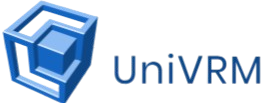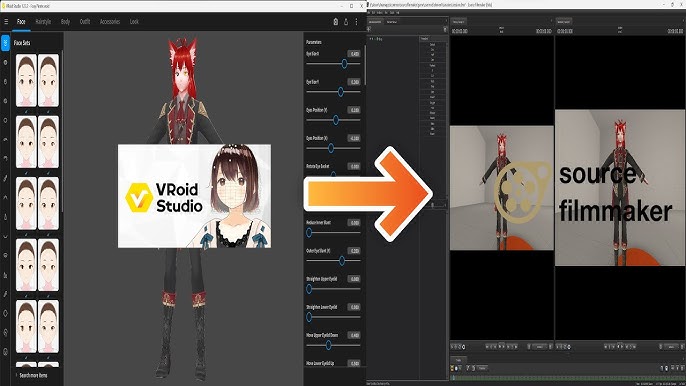UniVRM offers a reliable solution for developers and content creators looking to upgrade their 3D avatars from the older VRM 0.x format to the modern VRM 1.0 standard. With evolving requirements across platforms and increasing demand for standardized humanoid models, this upgrade ensures greater compatibility, better performance, and access to the latest features in avatar-based applications.
By leveraging UniVRM’s built-in migration tools within Unity, users can streamline the conversion process with minimal manual effort. Whether you’re developing for VTubing, virtual reality, or interactive gaming, transitioning to VRM 1.0 prepares your assets for broader usage and future-proof deployment.
Why Upgrade to VRM 1.0?
Upgrading to VRM 1.0 is more than a version change; it’s a strategic step toward maximizing compatibility, stability, and scalability in your 3D avatar pipeline. Below are the key reasons why this upgrade is essential.
Enhanced Cross-Platform Compatibility
VRM 1.0 introduces a more standardized and streamlined structure that supports broader deployment across Windows, macOS, iOS, Android, and WebGL platforms. With more applications adopting the 1.0 standard, developers can ensure their models remain accessible and functional in a diverse range of environments.
Support for Standardized Metadata Fields
The latest standard includes improved support for avatar metadata such as author name, usage licenses, thumbnail images, and facial expression presets. These fields are critical for consistent model interpretation across multiple applications and are essential for users concerned with attribution and content reuse.
Improved Shader Handling and Rendering Pipelines
VRM 1.0 incorporates updates for better compatibility with Unity’s Universal Render Pipeline (URP) and High Definition Render Pipeline (HDRP). This allows for more consistent material rendering, efficient shader usage, and improved lighting behavior across different devices and rendering settings.
Better Runtime Performance and Security
With optimizations in model structure and material handling, VRM 1.0 improves runtime performance. In addition, it adopts more secure processing pipelines, reducing the risk of instability or shader conflicts that might arise with older formats.
Required for Certain SDKs and Platforms
Many modern development kits and platforms, including VR/AR applications and VTuber software, have moved to exclusively support VRM 1.0. Continuing with VRM 0.x may result in reduced compatibility and limited functionality.
UniVRM’s Role in Migration
UniVRM is the official Unity implementation of the VRM standard and plays a crucial role in the migration process. Its tools are specifically designed to simplify and automate the upgrade path for content creators and developers.
Built-In Migration Tools
UniVRM includes native support for detecting older VRM 0.x files and guiding users through the migration to VRM 1.0. It handles:
- Rig structure validation
- Reformatting and mapping metadata
- Conversion of shaders and materials to the 1.0-compatible formats
This makes the migration process not only possible but highly efficient, minimizing the need for complex manual adjustments.
Automated Error Detection
When a VRM 0.x file is imported into Unity, UniVRM automatically detects its legacy format and prompts the user with available actions. This proactive error handling helps catch compatibility issues early in the process.
Step-by-Step Migration Process
Migrating a model from VRM 0.x to VRM 1.0 using UniVRM is a straightforward process. Follow these steps for a successful conversion:
Import the VRM 0.x Model into Unity
Start by importing your older model into the Unity editor using UniVRM. Drag the .vrm file into the Assets folder, and UniVRM will parse the file and create a prefab.
UniVRM Detects and Flags Legacy Format
Upon import, UniVRM recognizes the 0.x version and notifies you that the model is in a deprecated format. You’ll be prompted to begin the migration process.
Use the Built-in Migration Tools
Access the migration utility from the UniVRM menu. The system will begin analyzing the model for compatibility, preparing a transition plan to convert shaders, metadata, and rig structure.
Review Humanoid Bone Mapping, Blend Shapes, and Metadata
Once migration suggestions are ready, verify all bone mappings for accuracy. Also check facial expression blend shapes, spring bone configurations, and model metadata.
Export the Model as VRM 1.0 Using the UniVRM Exporter
After final verification, export your model using the VRM 1.0 export tool included in UniVRM. The exporter packages your model with updated metadata, optimized materials, and VRM 1.0 compliance.
Best Practices During Conversion
To ensure a seamless and reliable migration process, consider these professional best practices:
Always Back Up the Original 0.x Model
Before beginning any migration, save a copy of your original VRM 0.x file and associated assets. This provides a fallback in case adjustments are needed or if you wish to compare results.
Review Blend Shape Clips and Animations for Compatibility
After migration, test all facial and body animations to confirm that blend shapes behave as expected. Minor changes in naming or indexing may affect performance.
Verify Material Settings
Ensure that materials and shaders display correctly after conversion. Some custom shaders from VRM 0.x may not translate directly to URP or HDRP environments. Replace or adapt them as necessary.
Validate the Exported VRM 1.0 File
After exporting, test the new file within the intended runtime environment. Use VRM inspection tools to confirm metadata accuracy and bone hierarchy integrity.
Limitations and Known Issues
While UniVRM simplifies the migration process, some limitations still exist:
Custom Shaders or Scripts May Not Auto-Migrate
Models that rely on heavily customized shaders or scripts might require manual recreation or adjustment. Shader nodes and legacy features may behave differently or be unsupported in VRM 1.0.
Manual Adjustment Needed for Spring Bones or Look-At Behaviors
Some dynamic features, such as spring bone movement and look-at constraints, may require tuning post-migration. Check for proper operation within Unity’s play mode.
Runtime Behavior Might Vary
Depending on your Unity version and platform target (e.g., WebGL vs Android), exported models may behave differently. Testing across all platforms is recommended.
Resources for Migration Support
If you encounter challenges or need additional guidance, the following resources offer extensive support:
UniVRM GitHub Documentation
Detailed usage instructions, release notes, and issue tracking are maintained by the official developers.
VRM Consortium Technical Guides
The consortium offers guidelines on standards, use cases, and compliance with VRM specifications.
Community Forums and Developer Groups
Online communities of VRM and Unity users provide shared experiences, troubleshooting advice, and sample projects to accelerate learning.
Conclusion
Upgrading VRM models to version 1.0 is a crucial step for ensuring long-term usability, professional deployment, and cross-platform functionality. UniVRM not only simplifies the process through automated tools and guided workflows but also empowers developers with the flexibility to refine and enhance their avatars.
Whether you’re creating characters for immersive VR applications, interactive entertainment, or VTuber production, migrating to VRM 1.0 is a strategic investment. With the right preparation and attention to detail, your 3D avatars can evolve with industry trends and maintain top-tier performance across the digital landscape.

